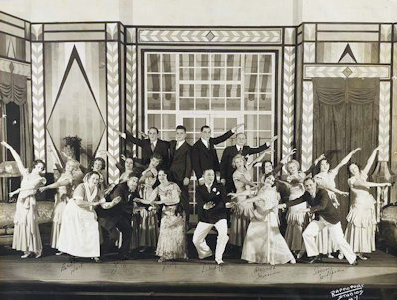The Museum of the Yiddish Theatre is a virtual museum, i.e. the museum exists in "cyberspace," and does not exist in the "real world" as a "brick-and-mortar" building. One can only "visit" the Museum via the Internet, and thus it is open to everyone twenty-four hours a day, seven days a week (and there is no admission fee!).
The advantages of a virtual museum are many. For instance, in order to visit a "bricks and mortar" museum, one has to physically travel there to see what it has to offer. This is not the case with a virtual museum, where anyone with a decent set of computer skills and a modicum of patience can visit it from their home computer or elsewhere. Another advantage, as alluded to earlier, is that the Museum has no opening or closing hours, nor do we close for federal or state holidays. We don't charge admission or ask for a "suggested" donation as most museums do (though you can feel free to send along a donation to the Museum that will be used to offset our expenses.) We only ask that you try your best to appreciate what is laid out before you, and that you consider your own family history to be important in its own right and worth preserving.
Many of us visit "real" museums from time to time. We may appreciate a work of art not only for its artistic merit, but also for the way it stirs our imagination and curiosity. Who was the artist, i.e. not just what their name was, but what made the artist create a particular work of art? Did the work represent in some way their life experiences or belief system, or did they do it simply because it was a commission? What was the society like in which they lived? We may even look into the eyes of the person whose portrait might have been painted, and try to see inside their soul. Odds are the person or persons portrayed in any painting on display in a major museum is not related to us, yet we appreciate it nevertheless because of its beauty and its relevance to the time in our world history in which it was created.
At the Museum of the Yiddish Theatre, an effort has been made to do just that. The Museum attempts to strike a balance in the telling the story of our Yiddish Theatre. It also represents the many beautiful aspects of the Yiddish theatre.


